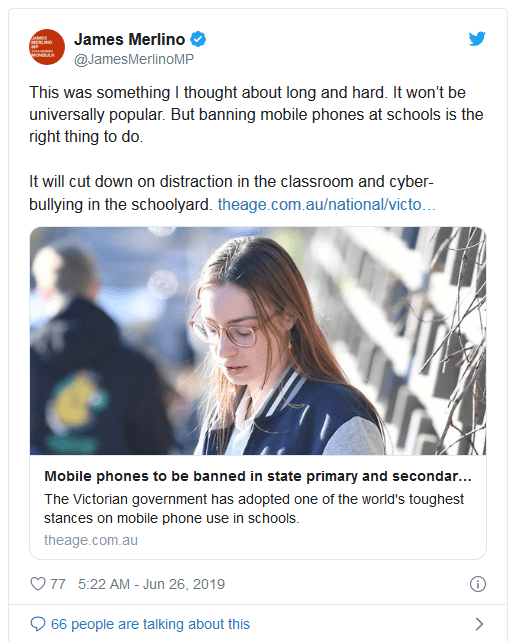
“Reflecting on your experience as an educator, and using your readings and interaction with the subject to date, develop concise statement about concepts and practices in a digital age within the context of your work or professional circumstances. Consider the challenges and opportunities for educators, and the personal aims and knowledge enquiry that brings you to this subject.”
In 2019 I graduated with a Bachelor of Adult and Vocational education and during my studies, I completed the EMT-409 Technology for Adult learning & Teaching and thoroughly enjoyed this unit. As a result, I decided to continue studying at Charles Sturt University and I enrolled in a Master of Education, specialising in Digital Technology. My objective is to increase my knowledge in digital education and discover new and innovative ways to use technology within my teaching practices.
As an educator, I am constantly seeking new ways to educate students and I am always enthusiastic to try new technology and ideas. I have started to notice a common theme emerging and this is “Using technology for technologies sake”. Selecting appropriate technology promotes a higher level of learning and increases student engagement (Agyei, Keengwe, 2014, p, 155.) I recall presenting a Google slide to a group of students last year and I decided to use the audience questions tool. This tool allows the students to ask a question on their phone and it displays on the screen. On this particular day, absenteeism was high and out of 24 students, only 12 were in attendance. After 5 minutes into the tutorial, I noticed the question tool was disrupting the classroom delivery and slowing down the flow of the lesson. I paused, looked at the students and said this isn’t working for such a small group, how about you call out your questions like we normally do. We all laughed and this was a perfect example of using technology for technologies sake.
The world wide web was established in 1989 by Tim Berners-Lee and it is an integral component of the Knowledge society we live in today (Wikipedia, 2020, para.1). According to Thomas & Brown, a new culture of learning is evolving due to increased connectivity where new skills and innovation are required to keep up with rapidly changing technology. Concepts and practices in a digital age within my area of teaching in Vocational Education are limited due to budget limitations and educators resisting new technology. In my teaching area, we have access to Blackboard Learn a content management system to assist with educational delivery. I have been using Blackboard for over 7 years, however, there is a percentage of academics refusing to implement the use of Blackboard in educational delivery. A top news item at the moment is the Covid-19 pandemic, and as a solution digital technologies are being implemented in the event schools and universities are to be shut down. On Sunday 15th March, Scott Morrison publicly announced Australian schools and Universities are to remain open and this will be reviewed again on Friday (Nine News, 2020, para. 3). In preparation for a college shut down my workplace is running a series of webinars in Adobe connect and Blackboard with the outlook teaching will be delivered from home via a digital platform. I wonder how technology resisters within education are feeling now? It is highly plausible, the fear of technology is greater than contracting Covid-19!
In the NMC Horizon report 2019 for Higher education, it was noted Mobile Learning is the top priority within education. The report stipulated students and educators rely heavily on mobile devices such as smartphones and tablet to form part of the learning experience due to accessibility and affordability (Alexander, Ashford-Rowe, Murphy, Dobbin, Knott, McCormack, Pomerantz, Seilhamer, Weber, 2019, p. 21). Mobile phones are an important learning tool and provide the perfect opportunity to educate students to use phones professionally by introducing phone-based games and quizzes (Bristol, 2018, p. 145). In 2019 mobile phones were banned in state primary and secondary schools, with James Merlino holding the view, it is the right thing to do due to cyberbullying and the misuse of phones cause’s distraction (The Conversation, 2019, para. 2). The ability for educators to teach students how to use phones correctly may lead to a change in attitude and prepare students to become responsible digital citizens.
Image 1 – James Merlino screenshot
Image 2 – In this image, you will see a mobile device is never far away from my design students. Ipads are used for in-class quizzes, mobile phones for researching and laptops for creating content.)
Digital technology is at the forefront of society, forming the fabric of everyday life and will continue to thrive as we live in a digital economy (Dufvaa, Dufvab, 2019, p. 18). In the wake of Covid-19 educational institutions are relying heavily on digital platforms to minimise disruption to both students and educators. In a time that appears chaotic and uncertain, this situation may change the mindset of the technology resisters and a review of the removal of mobile devices within education.

References
Agyei, D. D., & Keengwe, J. (2014). Using technology pedagogical content knowledge development to enhance learning outcomes. Education and Information Technologies, 19(1), 155-171. DOI http://dx.doi.org.ezproxy.csu.edu.au/10.1007/s10639-012-9204-1
Alexander, B, Ashford-Rowe, K, Murphy, N, B, Dobbin, G, Knott, J, McCormack, M, Pomerantz,J, Seilhamer, R, Weber, N, (2019). EDUCAUSE Horizon Report: 2019 Higher Education Edition Retrieved from https://library.educause.edu/resources/2019/4/2019-horizon-report
Bristol, T, J (2018). Students, take out your phones. Teaching and Learning in Nursing, Vol.13 (3), pp.145-146 https://doi.org/10.1016/j.teln.2018.02.003
Dufvaa, T, Dufvab, M, (2019). Grasping the future of the digital society. Aalto University School of Arts, Design and Architecture, Vol.107, pp.17-28, Helsinki, Finland. DOI: 10.1016/j.futures.2018.11.001
Nine News, (2020), Coronavirus: Scott Morrison calls for calm amid pandemic as restrictions begin. Retrieved from:https://www.9news.com.au/national/coronavirus-scott-morrison-urges-calm-restrictions-on-public-gatherings-travel-begin/265a377f-352c-4447-9773-27927eed6b34
The Conversation, (2019), Banning mobile phones in schools: beneficial or risky? Here’s what the evidence says, Retrieved from https://theconversation.com/banning-mobile-phones-in-schools-beneficial-or-risky-heres-what-the-evidence-says-119456
Thomas, D., & Brown, J. S. (2011). A new culture of learning: Cultivating the imagination for a world of constant change (Vol. 219). Lexington, KY: CreateSpace.
Wikipedia, (2020) World Wide Web. Retrieved from: https://en.wikipedia.org/wiki/World_Wide_Web
Image 1 -The Conversation, (2019), Banning mobile phones in schools: beneficial or risky? Here’s what the evidence says, Retrieved from https://theconversation.com/banning-mobile-phones-in-schools-beneficial-or-risky-heres-what-the-evidence-says-119456
Image 2 (2019) photographed by Leanne Crawshaw
All other images on this page are from Pixabay a creative commons, royalty-free web-site.

Leanne, this is a excellent reflective blog. You have engaged well with the material in the modules and then applied your learning effectively to the question posed and your own experiences. I liked the example of ‘technology for technology’s sake’ in your classroom. I feel that we may be moving away from this with the sudden rush to move to online learning. Most certainly, our colleagues who have resisted engaging with the technology are finding it difficult now, but that’s where those of us who have the expertise can guide them to the best use of it for positive student outcomes.
You have used the affordances of the blog well, embedding URLs and images (with captions – thank you), and effectively assigning categories and tags. When citing images, they are listed in alphabetical order along with your other sources – there is no separation by format – and royalty free images such as those from Pixabay don’t need to be cited at all. Referencing takes lots of practice and do make use of the guides available on the CSU Library website.